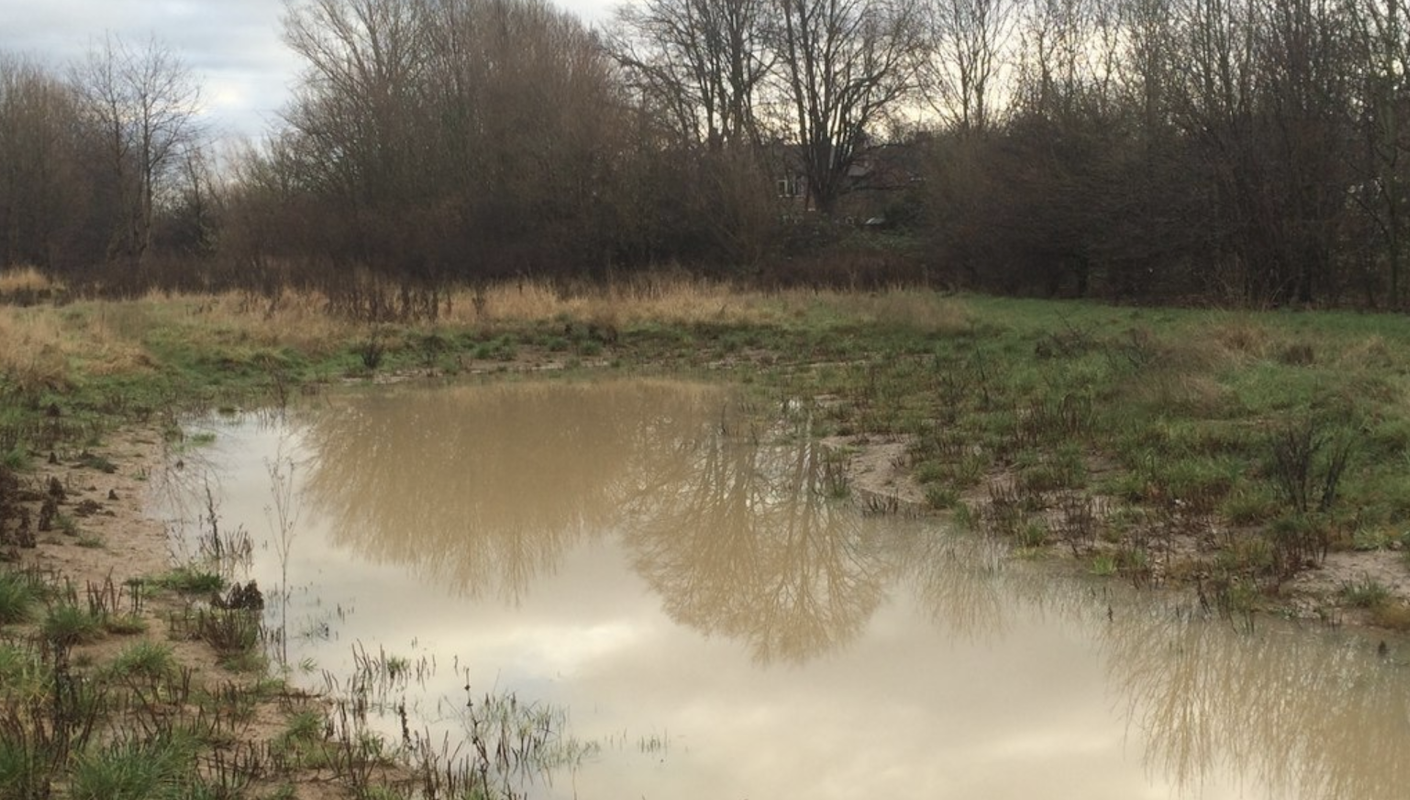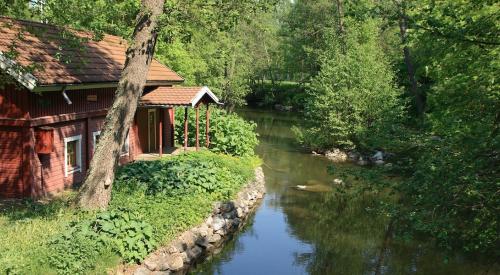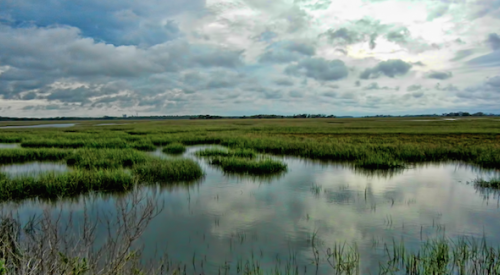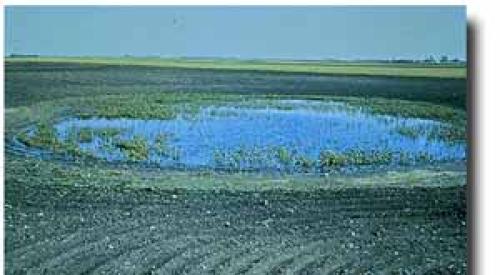Environmental Protection Agency administrator Andrew Wheeler resolved decades of uncertainty over federal jurisdiction of U.S. waterways when he announced a new final rule that better defines waters of the U.S. (WOTUS), during NAHB’s International Builders’ Show.
For years, NAHB has been pushing the EPA and the U.S. Army Corps of Engineers to produce a more sensible definition of WOTUS, which, because of its excessively broad definition, has slowed and restricted new development, needlessly driving up housing costs.
In August 2016, then presidential candidate Donald Trump addressed NAHB’s board of directors and promised to rescind a 2015 WOTUS rule that vastly expanded federal overreach by regulating isolated ponds and man-made ditches. The new final rule delivers on that promise.
The new rule announced by Wheeler recognizes the difference between federally protected wetlands and state protected wetlands. It preserves water protections and gives states the certainty to manage their lands and waters in ways that protect both their natural resources as well as their local economies.
Perhaps most importantly, the new rule adheres to the statutory limits on the authority of the EPA and the Corps of Engineers.
EPA’s new final rule will replace the 1986 rule and will narrow the extent of federal jurisdiction by excluding isolated water bodies, most ditches, and “ephemeral” waters that only form in response to rain. In the end, home builders and developers will be better able to determine whether they need federal permits for construction activities.
Single-Family Home Construction Costs and Profit
The cost of constructing a typical single-family home increased, as builder profits fell slightly, according to an annual NAHB survey of home builder members conducted late last year.
The NAHB Construction Cost Survey asked builders about the various components comprising the sales price of typical single-family homes they built during 2019. Survey results showed that while the average new-home sales price climbed to more than $485,000—the highest average sales price (not adjusted for inflation) in the survey’s history—nearly two-thirds of that cost went into constructing the home.
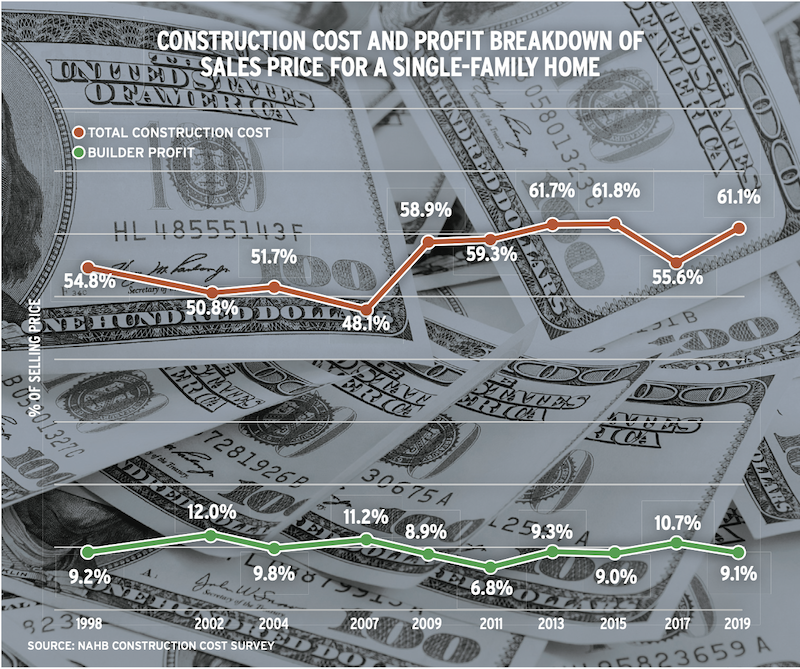
Chart background photo: Elenar / stock.adobe.com
On average, 61.1% of the sales price, or $296,652, goes to construction costs, up significantly from 55.6% in 2017. In fact, construction costs as a percentage of sales price are only slightly lower than the highest percentage (61.8%) ever recorded since the cost survey began in 1998. Add to that finished lot costs (18.5%), over--head and general expenses (4.9%), sales com-missions (3.7%), financing costs (1.7%), and marketing (1%), and the average builder profit is 9.1% before taxes, compared with 10.7% in the previous survey in 2017.
Access a PDF of this article in Pro Builder's March 2020 digital edition
